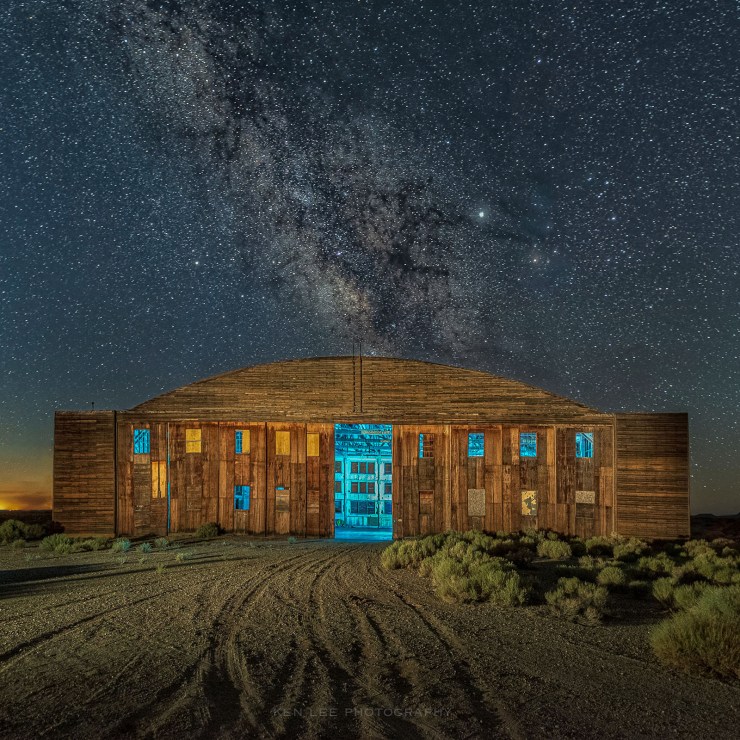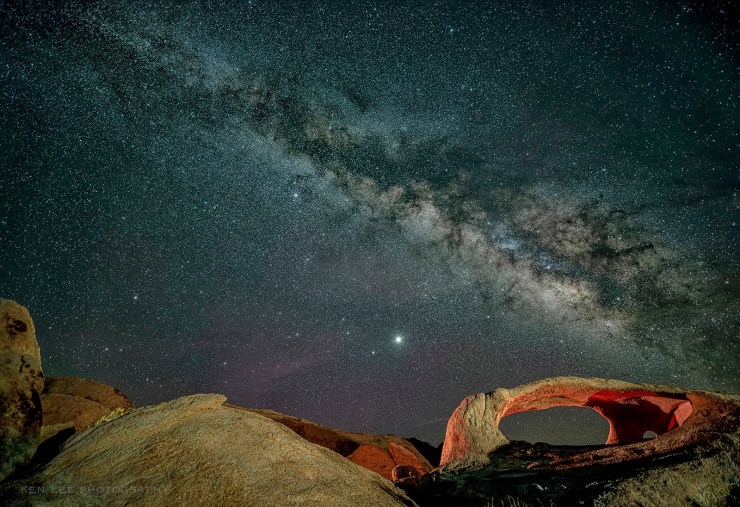Above us, only sky. And in that sky is a shimmering ring of stars that we call the Milky Way.
But most of us cannot see it. An international team in Science Advances estimates that 83% of the world and more than 99% of the U.S. and European populations live under light-polluted skies. In short, most of us cannot see the Milky Way. Furthermore, many of us cannot even see the Big Dipper.
For many, the only time we see the Milky Way is in photos

A question that I am asked often is, does the Milky Way actually look like it does in most photos?
What the Milky Way looks like to most of us

Above, I’ve tried to replicate what the Milky Way here looked like that night. Even after allowing our eyes to adjust for 15 or 20 minutes, it was very dark. Furthermore, we don’t see very much color in dim light. When it gets dark, the cones in our eyes lose their ability to respond to color. Everything becomes increasingly monochrome.
At high elevations on a clear night, you can see the Milky Way extremely well, better than the above photo. You may start to see more of the colors as well. A great place to see the night sky unaided is in the Atacama Desert. High elevation, atmospheric conditions and the vibrancy of the sky in the Southern Hemisphere create an exhilarating night sky.
What the Milky Way looks like to our cameras

Our cameras do not have cones. They do not see in monochrome when the light becomes dim. Furthermore, at high ISO, they are considerably more sensitive to light. The photo above is how the camera sees it prior to any post processing. This is how it looks straight from the camera.
So is this the way the Milky Way really looks? Well, yes, this is how it looks to our camera. However, it is already considerably brighter and contains considerably more detail and color than anything we could see with our eyes.
Processing Milky Way photos

Most of us night photographers like to have a little punchiness and color to our Milky Ways. Is this overdone? Sure, possibly. This is mild compared to some that I see, but still, sure. Post-processing is a matter of taste and comfort level. Furthermore, things like deep space astrophotography often inform what photographers wish to see out of their images.
What’s different here? Contrast has been added so the stars pop out more. They were always there, but contrast has brought them out. I did not apply saturation or add any colors, but certainly brightening the image has brought them out more. the Milky Way looks a little bit more like what we might see if we were standing at 8000 feet in elevation in the Atacama Desert.
Back to the question … does the Milky Way look like it does in most photos?

No. But they may be reasonably close to what our cameras see. Much like photos of waterfalls, sports, fashion, action photos where elements are frozen, or other kinds of photography, images might not depict what we see with our own eyes. But I suppose that’s part of the reason why we find photography so alluring.
Tell your story with the second annual Visual Storytelling Conference!
Experience four days of interactive, online training sessions featuring a range of educational content with experienced photographers and content creators. This free event kicks off with a series of technical boot camps to build essential skills, followed by live, online sessions on photography, video, business and social media. Join live from March 10-13, 2022!
